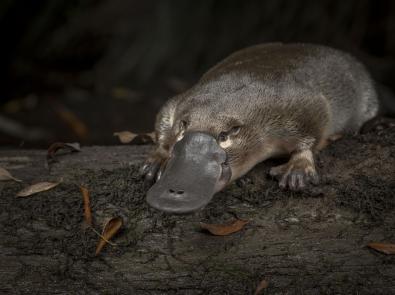Platypus live in rivers and creeks throughout Melbourne – but are known to be difficult to find. With your help, we can better understand these shy creatures and support them into the future.
This is more important than ever, as platypus have been formally listed as ‘vulnerable’ in Victoria.
Learn more about this special creature, the threats they face and how we’re helping to protect them in the following video:
Where platypus live in Melbourne
Platypus have been recorded in waterways around Greater Melbourne. These provide habitat for plants and animals, and are vital to sustaining much of our region’s native biodiversity.
For detailed data on platypus populations in each catchment, visit our Healthy Waterways website.
- Dandenong catchment
-
Platypus are known to occur in the upper parts of the catchment, namely:
- Upper Dandenong Creek
- Dobsons Creek
- Monbulk Creek
- Ferny Creek.
But in recent years, targeted surveys suggest platypus may no longer be present in Upper Dandenong and Ferny Creeks.
- Maribyrnong catchment
-
Platypus have been observed in:
- the lower reaches of Jacksons Creek near Sunbury
- Deep Creek Upper and Lower
- Maribyrnong River, near the junctions with the above creeks.
- Werribee catchment
-
Platypus in the Werribee River are considered locally threatened due to low numbers and continuing long term decline. They are observed:
- around Werribee
- further upstream around Bacchus Marsh, including in Werribee River Gorge.
Past records suggest that platypus were previously present in Kororoit Creek, but not since the Millennium Drought.
- Westernport catchment
-
Platypus are known to occur in the north eastern parts of the catchment, including rivers and creeks in the following river systems:
- Bunyip
- Tarago
- Lang Lang.
There is also a reintroduced population in Cardinia Creek, with platypus released between 2004 and 2007.
- Yarra catchment
-
Platypus have been observed in:
- Mullum Mullum Creek
- Yarra River at Warburton and tributaries (including McKenzie King, Surrey Road and Big Pats Creek)
- McMahons Creek
- Woori Yallock Creek
- Chum Creek.
Vulnerable populations of platypus have been observed in:
- Diamond Creek in Eltham
- Lower Plenty River in Greensborough
- Olinda Creek between Lilydale and Mount Evelyn
- Little Yarra River in Yarra Junction.
A locally threatened population of platypus has been observed in the Plenty River in South Morang.
Report platypus sightings
Community platypus reports provide researchers with meaningful ecological data. This helps build knowledge of local platypus populations and guide conservation efforts, including how we manage waterways.
There are multiple ways to report platypus sightings across Australia:
- PlatypusSPOT website or app, available for iOS and Android
- The Platy Project – Australian Conservation Fund
- Australian Platypus Conservancy
- iNaturalist – a community for naturalists
The best time to spot platypus is at dawn and dusk during autumn and spring.
eDNA sampling
Did you know we can survey platypus numbers from a simple water sample, using a method called environmental DNA (eDNA)?
We work with different community groups across Melbourne to collect water samples in spring and autumn, which are filtered to detect platypus DNA. This indicates if platypus are living in a particular waterway, helping us track the size and distribution of local platypus populations.
Citizen scientists can learn our process for collecting eDNA in the following video:
Other ways you can help
Litter is a serious threat to platypus. They can become entangled in items like fishing line, elastic hair ties and sealing rings from food jars. So, remember to:
- pick up litter
- take fishing line home with you
- snip circular items before binning them.
You can also help protect platypus by:
- monitoring waterbugs, an important food source for platypus
- keeping dogs on a leash around waterways
- reporting the use of illegal Opera House nets via the 24/7 ‘13FISH’ phone line
- installing a raingarden or water tank to reduce stormwater pollution.
Educational resources
Download our free resources for teachers and environmental leaders:
- Puddles the platypus (F-Year 2)
- Waterbug and platypus adaptations (Years 5-6)
- Waterwatch activity sheets (F-Year 6)
- Waterwatch activity and colouring sheets
More information
For more information on any of our activities or programs:
